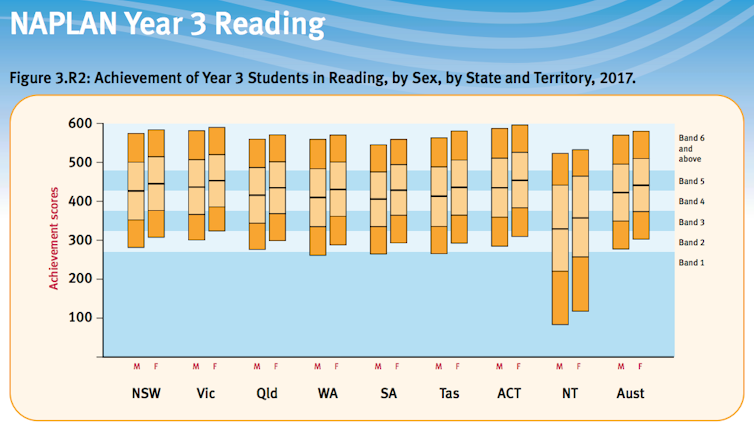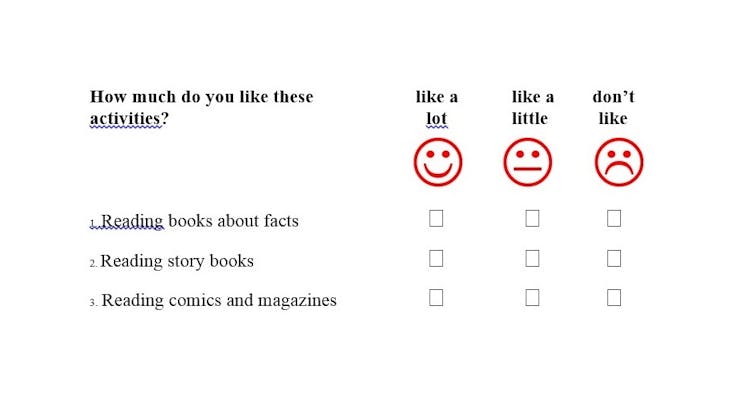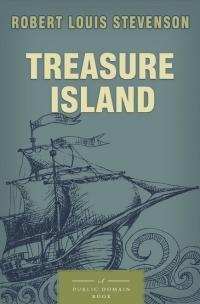
Shutterstock
Laura Scholes, Queensland University of Technology
Year 3 reading outcomes of 2017 NAPLAN testing once again demonstrate a gender gap, with boys underachieving compared to girls. A focus on teaching for the test has not closed the gender gap and only reduced student motivation and well-being.

ACARA
Calls for a review of NAPLAN ten years on are timely. But as well as looking at how high-stakes testing is narrowing the curriculum and causing student stress, we need to consider the testing regime’s influence on boys’ attitudes towards reading.
Read more:
NAPLAN 2017: results have largely flat-lined, and patterns of inequality continue
Attitudes towards reading
Reports increasingly highlight how negative attitudes towards reading constrain experiences for some boys. In the United Kingdom, a National Literacy Trust survey of 21,000 children aged eight to 16 found boys were more likely than girls to believe someone who reads is boring and a geek.
This attitude is believed to be related to deep-seated cultural issues that lead many boys to believe reading is feminine and “uncool”. Reluctance to read then translates into less time reading and lower achievement.
There is now a call in the UK for schools to have a policy of promoting enjoyment of reading rather than just a focus on effective teaching of phonics skills.
We have known for a long time that positive attitudes towards reading influence boys’ engagement with reading. Engagement influences practice, resulting in the Matthew Effect as cumulative exposure to print accelerates development of reading processes and knowledge.
Attitudes towards reading are not innate; they are learned predispositions in response to favourable or unfavourable experiences. In this way, a boys’ attitude towards reading develops over time as the result of beliefs about reading and, importantly, specific reading experiences.
In Australia, the focus on NAPLAN has changed the landscape of teaching and literacy experiences for students.
As part of this change, didactic teaching of reading for NAPLAN can compound negative attitudes about the nature of reading at school. Reading is seen as a passive (feminine) endeavour associated with boring schoolwork (preparing for the test).
While teaching phonics is already embedded in good teaching practice, the introduction of the Year 1 phonics check will potentially further narrow the curriculum as teachers are pressured to teach for yet another test. This initiative could also impact on teaching practices for reading in the early years.
Read more:
Explainer: what is phonics and why is it important?
If we are interested in enhancing reading outcomes for underachieving boys, we need to foster positive attitudes towards reading that translate into practice. The change needs to be from a focus on teaching reading to helping boys become successful and satisfied readers.
Enjoyment correlates with NAPLAN outcomes
My recent survey of 320 Year 3 children from 14 schools in Queensland identified their self-reported enjoyment of story books, non-fiction books, magazines and comics, and self-reported reading frequency.
Students coloured in a box to reflect an emotive face on a Likert scale to indicate their level of enjoyment and their frequency of reading. Students’ Year 3 NAPLAN reading outcomes were also collected.

Author provided, Author provided
Findings from the Pearson test of correlation between survey variables indicated correlation between higher student NAPLAN reading scores and higher levels of enjoyment for reading story books/non-fiction books and higher reading frequency. There was a statistically significant positive correlation between reading scores and reading frequency, and reading scores and reading enjoyment.
Even when teachers are supporting specific learning difficulties (such as dyslexia), it’s important to expand boys’ repertoire of positive reading experiences. This requires a shift from the exclusive teaching of the mechanics of reading to teaching practices that contextualise experiences and encourage enjoyment of reading.
Some strategies for success for boys (and girls):

Shutterstock
-
Expand school reading cultures. Directly challenge beliefs about reading being a feminine pursuit. Teachers can select and use texts that challenge what it means to be male and the power structures that exist in school and society.
-
Focus on the arts. Include artists-in-residence schemes, poetry weeks, dance sessions run by professional dancers, and drama productions that allocate lead roles to disengaged boys. Boys often enjoy working with “readers’ theatre” scripts, which allow them to feel like active participants in a story.
-
Leave reading choices up to students 50% of the time. Provide a wide range of texts to stimulate interest and build confidence through paired reading schemes and teacher decisions to give students space to talk about and reflect on what was enjoyable.
-
Promote male mentoring. Include parent-mentors and vertical mentoring with older boys mentoring younger boys in the school.
-
Let them talk! Boys who are reluctant readers need to have successful reading experiences. Use literature circles with mixed-ability grouping, providing boys with the support they need to focus on the “big ideas” in the story, as well as on the words and structure of the texts.
-
Include variety. Use interactive classroom activities fit for purpose so that both short, specific focused activities and more sustained, ongoing activities are used, as and when appropriate.
-
Risk-taking in teacher practice. Bring more creativity and variety. Expose students to new and novel reading experiences.
-
Implement teaching practices that encourage discussion. Based on Philosophy for Children, enhance reading comprehension as students explore different answers, examine the strengths and weaknesses for each, and critically reflect on assumptions along the way.
Read more:
Research shows the importance of parents reading with children – even after children can read
![]() When the focus is on teaching for the test, direct instruction and an exclusive focus on phonics, there is a narrowing of curriculum and teaching practice. Strategies can be easily implemented in the classroom. We need to move from teaching reading for NAPLAN testing, to teaching boys to enjoy reading to ensure their success.
When the focus is on teaching for the test, direct instruction and an exclusive focus on phonics, there is a narrowing of curriculum and teaching practice. Strategies can be easily implemented in the classroom. We need to move from teaching reading for NAPLAN testing, to teaching boys to enjoy reading to ensure their success.
Laura Scholes, Research Fellow, Australian Research Council (DECRA), School of Early Childhood and Inclusive Education, Queensland University of Technology
This article was originally published on The Conversation. Read the original article.

